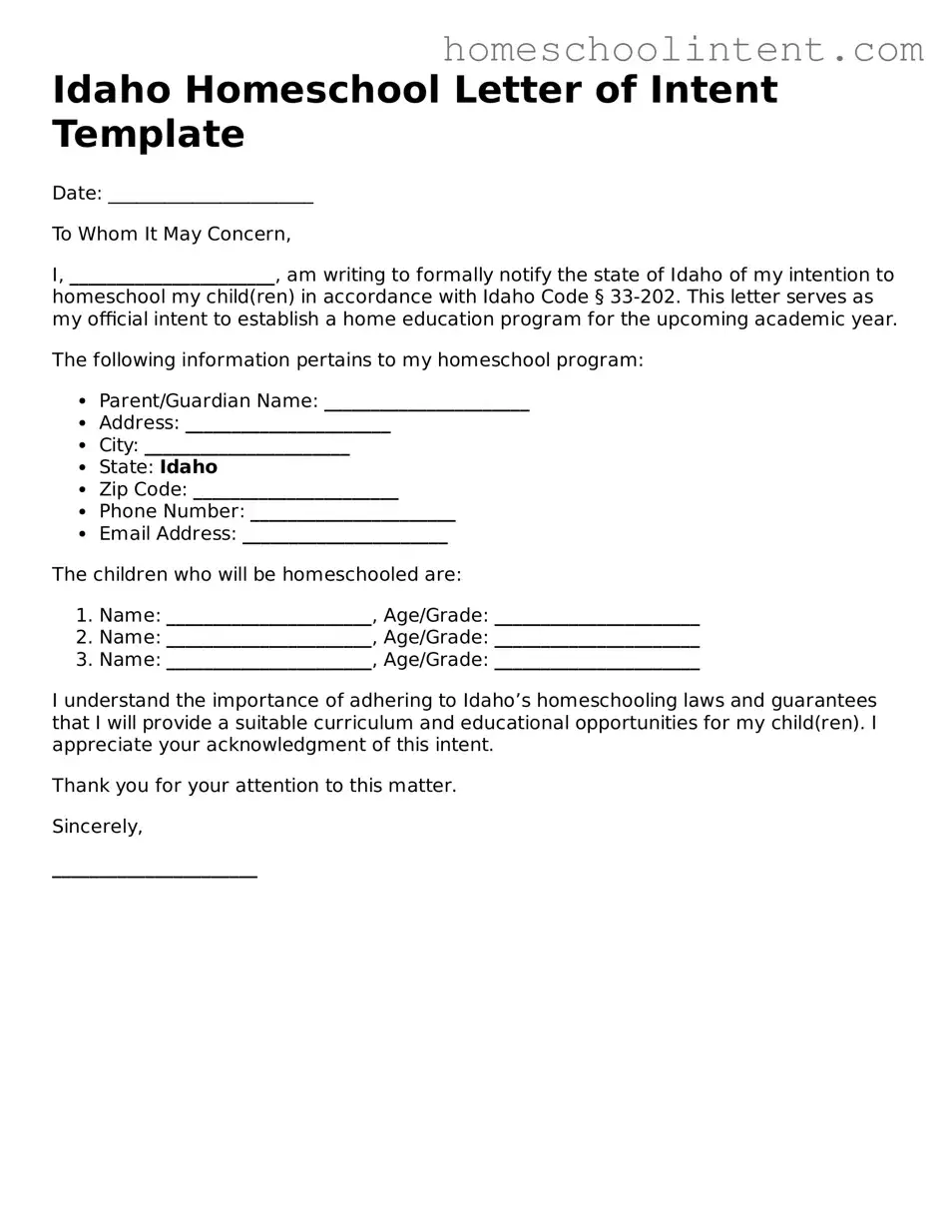Documents used along the form
When families decide to homeschool in Idaho, they often need to complete various forms and documents alongside the Homeschool Letter of Intent. Each of these documents serves a specific purpose in ensuring compliance with state regulations and helping to create a structured educational environment for students. Below is a list of commonly used forms and documents.
- Educational Plan: This document outlines the curriculum and educational goals for the school year. It helps parents stay organized and focused on their teaching objectives.
- Attendance Record: Keeping track of student attendance is essential. This record helps demonstrate that the student is receiving consistent education throughout the year.
- Progress Reports: These reports provide updates on a student’s academic performance and can be useful for assessing learning outcomes and making necessary adjustments to the curriculum.
- Transcripts: For high school students, transcripts summarize academic achievements and are often required for college applications or job opportunities.
- Standardized Test Results: Some families choose to administer standardized tests to measure educational progress. These results can provide valuable insights into a student’s academic standing.
- Portfolio: A collection of a student’s work over the year, including assignments, projects, and assessments. This portfolio showcases learning achievements and growth.
- Curriculum Materials: Documentation of the resources and materials used for instruction. This can include textbooks, online courses, and other educational tools.
- Withdrawal Form: If a child is transferring from a public school to homeschool, a withdrawal form may be required to officially remove the student from the school’s rolls.
These documents not only help families stay organized but also ensure they meet Idaho's homeschooling requirements. Proper documentation supports a successful homeschooling experience and fosters educational growth for students.
